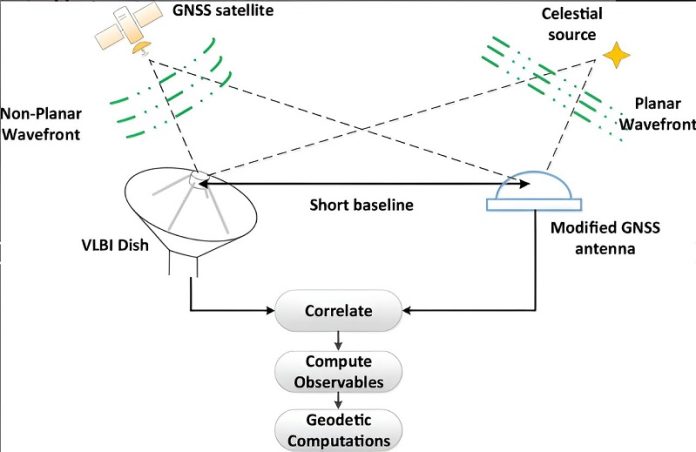
Have you ever used GPS on your phone to find a place?
Most of us do, but what if this technology could become even more precise?
Researchers from The University of Texas at Austin and NASA’s Goddard Space Flight Center have made a breakthrough that could do just that. Their new method, published in the journal Radio Science, could greatly improve the GPS systems we use every day.
For the first time ever, these scientists have combined a GPS antenna and receiver with a large radio telescope.
This might sound complex, but it’s a game-changer for GPS technology. They used a technique called Very Long Baseline Interferometry.
This technique is quite special. It measures the time difference of radio waves arriving from far-off cosmic sources, like distant galaxies, using antennas that can detect these signals.
The team’s approach used the sensitivity of a radio telescope to boost the GPS receiver’s sensitivity. This extra sensitivity allowed them to observe powerful radiation and particles from supermassive black holes, incredibly far away—up to 5 billion light-years! Imagine the power of being able to detect such distant cosmic events.
This is not just cool science stuff. It has practical uses that affect our daily lives. For instance, this enhanced technology can help in monitoring small land movements in areas prone to earthquakes or in understanding changes in sea levels.
Johnathan York, a research scientist at the Applied Research Laboratories, explained how this breakthrough could lead to better navigation for everything from our smartphones to national security.
He mentioned that improving reference frames—basically, the system that helps GPS know exactly where you are—could now be enhanced to be accurate down to the millimeter. This level of precision is crucial for various important Earth science applications.
The researchers tested this new method at the Very Long Baseline Array facility in Fort Davis, Texas, and a nearby observatory.
They successfully detected these distant cosmic jets, which means they could reference signals from far beyond the usual 20,000 kilometers where GPS satellites orbit, to astronomical objects 5 billion light-years away. To put this in perspective, it’s like flying to a GPS satellite and back about a quintillion times—that’s a 1 with 18 zeros!
Leonid Petrov, the lead scientist at NASA Goddard Space Flight Center, pointed out that while scientists always try to push their instruments to the limit, an improvement of 18 orders of magnitude is truly extraordinary.
What does this mean for GPS technology? It means that the accuracy of the geodetic reference frames will get a significant boost. These frames use a bunch of locations measured by GPS to create a common coordinate system.
The researchers aren’t stopping there. They plan to delve deeper into linking GPS positioning with the positioning based on distant cosmic observations made by radio telescopes. By combining these techniques, they aim to further refine the geodetic reference frames.
This could redefine how positions on Earth are measured with unprecedented precision. So, the next time you use GPS to navigate, remember, it’s about to get a whole lot more accurate!
Follow us on Twitter for more articles about this topic.
Source: University of Texas at Austin.



